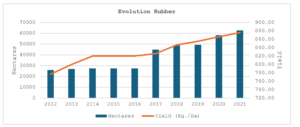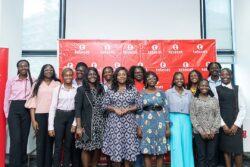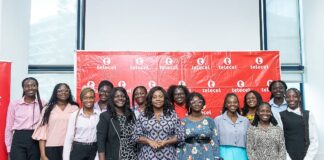The rubber sector is a key component of Ghana’s economy, significantly contributing to the nation’s export revenues. In 2022 alone, exports of Technically Specified Rubber (processed natural rubber that has been graded to meet specific quality standards, for industrial use) and natural rubber sheets brought in approximately USD 131.3 million, according to data from the Ghana Export Promotion Authority.
This impressive figure underscores the sector’s pivotal role in driving economic growth and highlights its vast potential.
With its versatile latex, the natural rubber plant is indispensable across numerous industries. From vehicle tyres and gloves to swim caps, mattresses, catheters, rubber bands, balloons, tennis shoes, and sporting goods, rubber is a fundamental raw material in producing various products.
Ghana’s rubber cultivation thrives within the “Rubber Belt,” an equatorial zone that spans approximately 15°N to 15°S of the equator. This region, known for its favourable climatic conditions and fertile soils, includes significant rubber-producing areas such as the Amazon basin in Latin America, Southeast Asia, the South Pacific, and West and Central Africa. Countries like Brazil, Malaysia, Indonesia, Thailand, Côte d’Ivoire, Nigeria, and Ghana are at the forefront of rubber production in these regions.

Global Market Trends and Prospects
According to the Research & Markets report (quoted by Yahoo Finance), global natural rubber production is expected to grow at a Compound Annual Growth Rate (CAGR) of 4.3% from 2021 to 2026. The market is projected to reach USD 51.21 billion by 2027, with an annual growth rate of 5.3% during this period (source: Fortune Business Insights report). This growth is primarily driven by the increasing demand for natural rubber because of its insulating properties in the automotive industry, which is a major catalyst for market expansion.
According to the International Rubber Study Group (IRSG), the Asia market is the largest consumer of natural rubber, with China, India, and Thailand collectively consuming 8 million tons annually. This high demand is primarily driven by the automobile and tyre industries in these countries. As a result, the Asia market continues to be the driving force behind the growth in global rubber demand.
Ghana’s Natural Rubber Sector
Ghana’s natural rubber sector currently has four active processing factories across the Western, Central, and Eastern Regions. The largest processor, Ghana Rubber Estate Limited (GREL), operates two factories in the Western Region with a combined capacity of 20 tons per hour. Other processing factories include NARUBIZ Ltd (1 ton per hour), Rubber Plantations Ghana Ltd (RPGL) (0.8 tons per hour), APEX Rubber Processing (1 ton per hour). Additionally, Yaeric Company Limited is set to become the fifth factory, with a processing capacity of 1 ton per hour.
Sector Growth and Export Performance
Before 2012, the rubber sector faced production downtime due to global market price dynamics and low investment. However, the sector experienced a notable turnaround from 2012 to 2021. The cultivated area dedicated to rubber expanded significantly, increasing from 25,000 hectares to 62,558 hectares. Productivity also saw a marginal rise, with natural rubber yield per hectare growing from 780kg (0.78 tons) per hectare in 2012 to 880kg (0.88 tons) per hectare by 2021.
In terms of exports, Ghana experienced a surge, with export earnings from rubber rising from US$69 million in 2012 to US$131 million in 2022, representing approximately 90% growth. In 2021, rubber became Ghana’s 13th most exported product and 8th Non-Traditional Export commodity, with exports valued at US$135 million, and US$131 million in 2022, underscoring its growing importance in the country’s export market.

Challenges in the Rubber Sector
The natural rubber sector has historically struggled to secure financing from banks due to several factors. The long gestation period of rubber cultivation requires substantial long-term financial resources, which many banks are reluctant to provide. This reluctance is compounded by banks’ dependence on donor-funded projects in the rubber sector, the perceived risks within the sector, and the lack of suitable financial structures and flexible instruments in Ghana. While some government-owned banks have provided financing, this has primarily been due to donor interventions. Additionally, Ghana’s land tenure system complicates land ownership and access, hampering the expansion of rubber cultivation.
High-quality rubber planting materials are both scarce and expensive, further burdening farmers. The rubber plant’s seven-year maturation period and vulnerability to climatic risks deter financial institutions from lending to the sector. Price volatility in the international rubber market and limited competition among buyers further exacerbate financial uncertainty for rubber producers, making the sector less attractive to investors and lenders. Consequently, the sector has relied heavily on donor funds for sustainability.
GIRSAL’s Contribution to the Rubber Sector
State-owned rubber companies like GREL and Rubber Plantation Ghana initially led the sector but eventually transitioned to multinational ownership, transforming the industry. However, there was a pressing need to establish local indigenous processing factories with the right protocols to further develop the sector.
Recognizing the untapped potential in the rubber sector, GIRSAL stepped in to facilitate the entry of indigenous processors. By providing essential financing incentives through Credit Risk Guarantees, Technical Assistance, and Advisory Services, GIRSAL aimed to mitigate perceived risks and make the sector more attractive to banks. This support enabled financial institutions to offer loan facilities to rubber value chain actors such as producers and processors, thereby attracting local participation and growth in the sector.
In 2020, GIRSAL spearheaded the establishment of the first indigenous-owned natural rubber processing factory in collaboration with a financial institution. By providing technical advisory services and issuing a Credit Risk Guarantee, GIRSAL enabled a bank to finance the project. From October 2021 to December 2023, the factory produced and processed 8,500 metric tons of Technically Specified Rubber (TSR) for export, generating over USD 10.8 million in turnover. By the end of 2024, production is projected to increase to 9,200 metric tons, resulting in an estimated annual turnover of USD 10.8 million.
The establishment of this factory has created over 60 permanent jobs and sustained employment for 2,700 workers, including latex tappers, farm maintainers, and transporters within its operational region. Additionally, the factory sources cup lumps from more than 451 local farmers.
Building on this success, GIRSAL is collaborating with other banks to establish new rubber processing factories and renovate existing facilities experiencing downtime. This initiative aims to increase raw material availability for processing and enhance the production capabilities of factories to support exportation.
Value-Addition Prospects of the Rubber Sector
Ghana imports a wide range of rubber products, including vehicle tyres, automotive parts, medical equipment and devices, industrial products, cookware, condoms, and other value-added items made from natural rubber exported from Ghana.
Adding value to locally produced rubber presents significant opportunities for economic growth. By manufacturing natural rubber-based goods domestically, such as car bushings and fan belts, Ghana can reduce its reliance on imports. This effort aligns with the country’s import substitution agenda, particularly as automobile companies like Toyota and Volkswagen begin assembling vehicles locally.
One of GIRSAL’s key targets in its 5-year plan is to contribute to Ghana’s import substitution agenda. To this end, GIRSAL has been collaborating with other consultants within the rubber sector to conduct a feasibility study on potential products that can be derived from Technically Specified Rubber (TSR). The goal is to add value to TSR, expand the product portfolio in the rubber industry, create more jobs, generate additional income for processors, increase exports, and enhance Ghana’s foreign exchange earnings. These efforts are expected to address the depreciation of the Ghanaian cedi and improve the balance of payments.
Conclusion: Call for Increased Rubber Plantation Cultivation, Processing, and Financing
With established protocols for the sustainability and financing of the rubber sector, Ghanaians are encouraged to invest in the rubber value chain. There is an increasing demand for natural rubber cup lumps from local processing factories, enhancing local competitiveness. This presents opportunities to invest in rubber plantations to meet an estimated annual demand gap of 26,000 metric tons. Potential investors should be aware that processing factories need to control at least 60% of their raw materials to ensure a steady supply for TSR production.
Furthermore, adding value to TSR by manufacturing derivatives currently imported can reduce import reliance and boost exports of TSR, thereby stabilizing the domestic market and enhancing export potential. This, in turn, will improve Ghana’s balance of payments and help mitigate the depreciation of the cedi.










